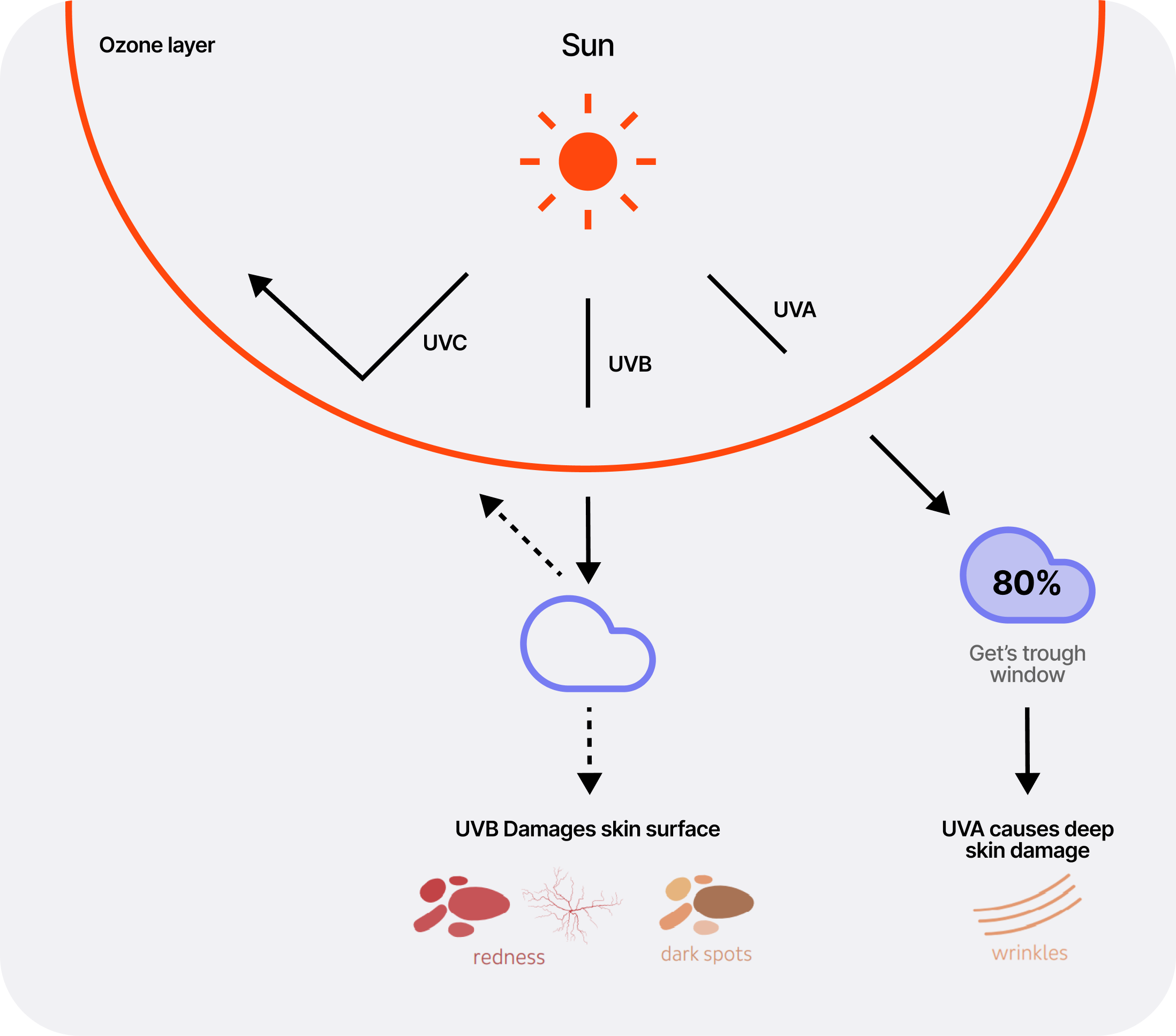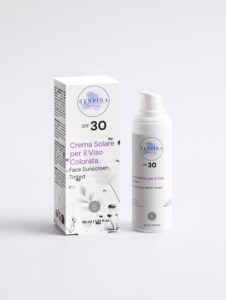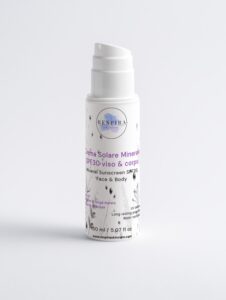Spring is already here and the sun will soon start working its magic bringing us good experiences and vitamin D. That is why, at least in the Northern Hemisphere, we look forward to those spring and summer months so much.
Unfortunately, the sun also brings us some very unfortunate side effects, such as a specific portion of ultraviolet (UV) light called UVB. UVB rays They are responsible for sunburn and skin cancer in the worst cases.
Therefore, we need to protect our skin and the protector is sunscreen. In this article, we will explain why sunscreen is an essential element of skincare and why it is something to offer your clients this summer season! Consequently, we will outline the difference between mineral sunscreen and chemical sunscreen.
And a little spoiler: We don't really like chemical sunscreen.
Here's WHY!
What is the difference between mineral sunscreen and chemical sunscreen?
The main difference between the two products is the list of ingredients, the effect and the protection processes.
1 – The formula
First, mineral sunscreens are formulated with natural mineral filters such as zinc oxide and/or titanium dioxide. These ingredients are allowed in certified cosmetics and skin care products. The self-described SPF30 product includes zinc oxide. The ingredients help reflect and protect the skin from UVA and UVB rays.
Synthetic sunscreens use chemical compounds made in a lab – there will be a lot of complex and hard to read ingredients that will do the job and provide protection from the sun.

2 – The function
Mineral sunscreen forms a protective layer that helps reflect sunlight away from your skin. It helps reflect both UVA and UVB rays!
However, chemical sunscreens convert sunlight into heat because the sunscreen is absorbed by the skin. Making them potentially more irritating and not suitable for sensitive skin. SPFs protect against UVA or UVB rays.
The protection process for synthetic sunscreen is chemical, but for mineral sunscreen it is a physical process.

3 – How long do they work?
Mineral SPF works as long as it is on the skin, so it has a long-lasting protection! However, chemical sunscreen degrades in the sun, so it must be reapplied to the skin every two hours.
Back to SPF 30, it offers high protection because it reflects UVA and UVB rays. UVA rays are what helps the skin age faster and creates wrinkles. UVB rays are what causes sunburn.
Zinc oxide is the responsible ingredient that helps protect the skin and forms a protective layer.
However, zinc oxide lightens the skin because it is white, so the added shade of SPF helps it blend with the skin color. SPF helps hydrate the skin because it contains omega-rich sea buckthorn and hyaluronic acid.
The Breathe SkinCare Approach to Creating Sunscreens!
Respira SkinCare SPF30 sunscreen is a mineral sunscreen and is ECOCERT COSMOS certified. Since it is made with mineral filters, it is a challenge to get a formulation that is pleasant to use and does not leave a white film. Therefore, the production of the product took many years to create the right formula!
This product is ideal for those who like to spend time in the sun, be active or have a coffee outside the bar at the sunniest table. SPF 30 is ideal for everyone, even those with sensitive skin!
To understand how mineral sunscreen works and protects your skin, it’s best to compare it to chemical sunscreen. Plus, learn how to pair SPF30 sunscreen, with tint, with other everyday skincare products!
How to match and apply:
As a base before protection solare SPF 30 tinted, choose and apply any facial moisturizer of your choice. It can be a light hydrating day or a anti-aging day cream!
For additional protection, you can apply to the skin Antioxidant Booster Gel! The booster helps minimize damage caused by free radicals and protect the skin from pollution or other environmental factors.
At the end of the day, the gentle cleansing milk It can come in handy when you remove your SPF sunscreen and rinse it off with water.


A summary of the main benefits of SPF sunscreen:
Mineral sunscreens contain natural mineral filters such as zinc oxide and/or titanium dioxide, while synthetic sunscreens use chemical compounds made in a laboratory.
Mineral sunscreen reflects both UVA and UVB rays, while chemical sunscreen converts sunlight into heat and protects only from UVA or UVB rays.
Mineral sunscreen provides long-lasting protection, while chemical sunscreen needs to be reapplied every two hours.
Mineral sunscreen SPF 30 provides high protection against aging and sunburn and contains omega-rich sea buckthorn and hyaluronic acid to hydrate the skin.
Author:: Martina


